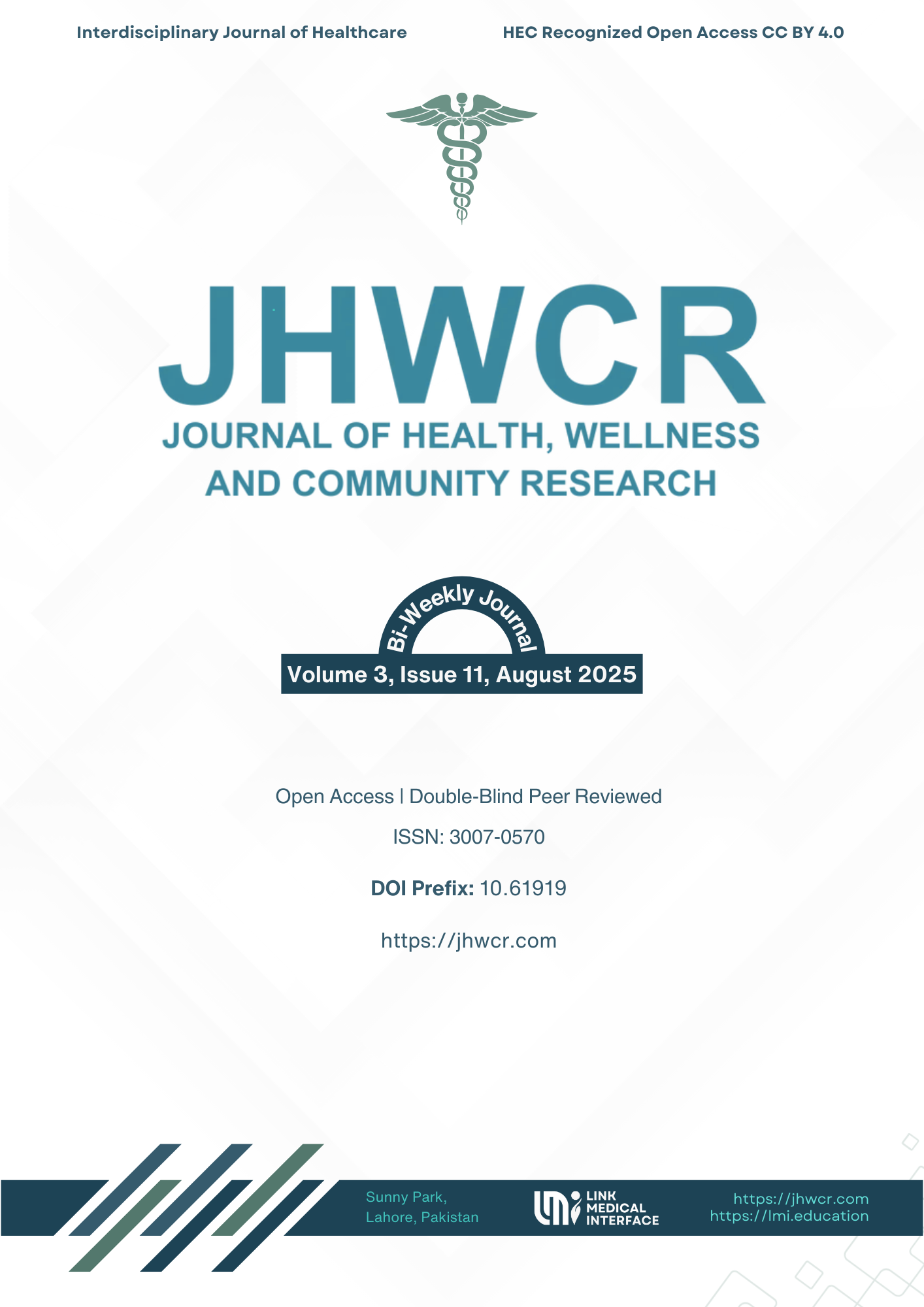Effect of Gaze Stability and Habituation Exercises on Dizziness in Patients with Unilateral Vestibular Hypofunction
DOI:
https://doi.org/10.61919/9rkc2259Keywords:
Unilateral vestibular hypofunction, dizziness, gaze stability, habituation, vestibular rehabilitation, dynamic visual acuity.Abstract
Background: Unilateral vestibular hypofunction (UVH) is a peripheral vestibular disorder characterized by dizziness, vertigo, postural instability, and impaired gaze control, which significantly affect quality of life. Vestibular rehabilitation therapy is the mainstay of conservative management, with gaze stability and habituation exercises being two widely used protocols. However, comparative evidence on their relative effectiveness remains limited. Objective: To compare the effects of gaze stability and habituation exercises on dizziness and visual function in patients with unilateral vestibular hypofunction. Methods: A randomized clinical trial was conducted at the Otorhinolaryngology and Neurology Departments of Islam Teaching Hospital, Sialkot, Pakistan, over six months. Thirty-four adults aged 30–65 years with UVH were randomized equally into two groups: gaze stability (n=17) and habituation (n=17). Interventions were performed three times daily, four days per week, for six weeks. Primary outcomes included Motion Sensitivity Quotient (MSQ) and dynamic visual acuity (active and passive, logMAR), assessed pre- and post-intervention. Data were analyzed using paired and independent t-tests, with significance set at p<0.05. Results: Both groups demonstrated significant within-group improvements (p<0.001). However, gaze stability yielded greater reductions in MSQ (mean Δ -45.71 vs -33.06; p<0.001), greater ADVA improvement (-0.28 vs -0.21 logMAR; p<0.001), and superior PDVA gain (+0.29 vs +0.21 logMAR; p<0.001). Conclusion: Gaze stability exercises were significantly more effective than habituation exercises in reducing dizziness and enhancing visual stability in UVH. These results support prioritizing gaze stability as a first-line rehabilitation strategy.
Downloads
Published
Issue
Section
License
Copyright (c) 2025 Wardah Maham (Author)

This work is licensed under a Creative Commons Attribution 4.0 International License.


